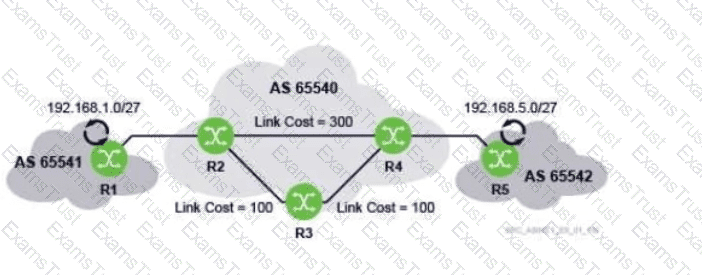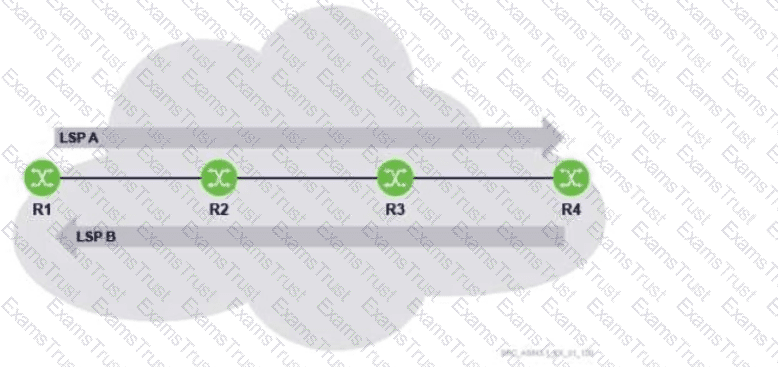Which of the following enables service providers to support multiple customers with the same VLAN ID over the same backbone?
Which of the following routing protocols cannot be used between routers R2 and R4?

Which of the following is a characteristic of a static route?
Which of the following statements about IP route summarization is FALSE?
Which of the MPLS routers is responsible for pushing new labels for LSP A and LSP B?

Which of the following statements about VPLS is FALSE?
Which of the following is NOT a characteristic of a Virtual Private Network (VPN)?
Which of the following statements about MD-CLI is FALSE?
Which of the following is IANA responsible for?
How does address summarization reduce the routing table size?
What is the sequence of messages that must be exchanged between a DHCP client and a server for the client to receive an IP address?
How many subnets and host addresses are obtained by subnetting network 201.148.26.0/24 using a /26 subnet mask?